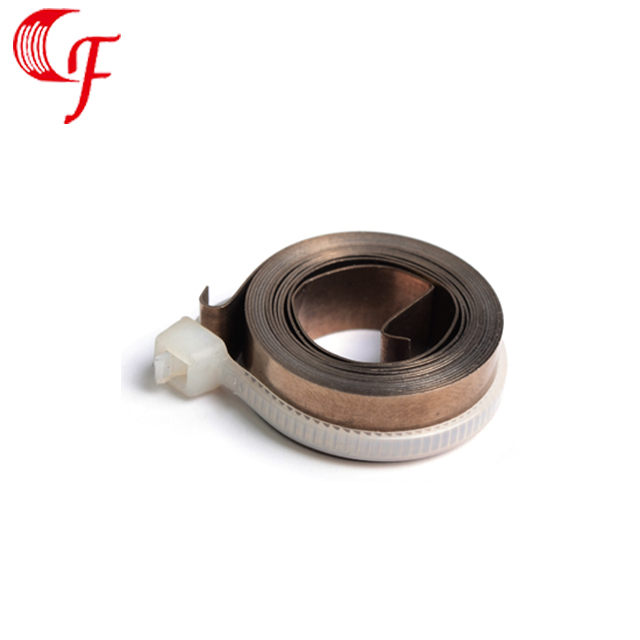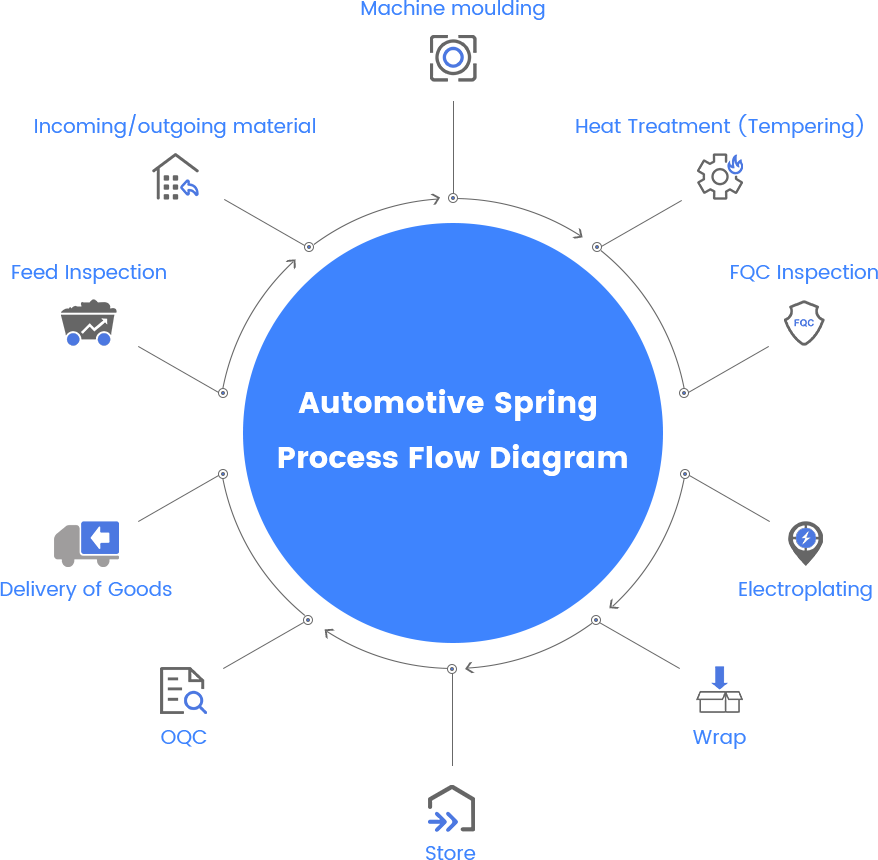+86 135-2882-5997

Electrical Spring Contact is a versatile component used in various electronic devices and industrial systems to ensure reliable electrical connections. Made from high-conductivity materials like copper alloy or phosphor bronze, it is designed to provide stable contact even in dynamic environments. The spring contact features excellent elasticity and fatigue resistance, making it suitable for high-current and high-voltage applications. Often coated with gold or tin to enhance conductivity and corrosion resistance, it ensures long-lasting performance.
Features
1. High Conductivity:
Premium spring contacts typically use beryllium copper (BeCu) or phosphor bronze alloys, achieving conductivity ratings of 20-50% IACS (International Annealed Copper Standard). Gold plating (0.5-2.0μm) is often applied to enhance performance, reducing contact resistance to<10mω.<>
2. Mechanical Durability:
Engineered for >100,000 mating cycles, these contacts maintain stable performance through repeated compression. Spring forces typically range from 50-500g per contact, with deflection capabilities of 0.5-3.0mm depending on design requirements.
3. Temperature Resistance:
High-performance contacts operate reliably across -55°C to +125°C environments. Specialized versions can withstand extremes from -65°C to +200°C, with thermal expansion coefficients carefully matched to PCB materials (CTE 14-18 ppm/°C).
4. Current Carrying Capacity:
Designed for currents from mA-range signal applications up to 30A power contacts. Current density is maintained below 300A/cm² to prevent overheating, with voltage ratings typically 50-600V AC/DC depending on insulation.
5. Miniaturization Capability:
Modern micro-spring contacts achieve pitches down to 0.5mm, with individual contact heights as small as 1.2mm. Surface mount (SMT) versions support automated placement with placement accuracy of ±0.1mm.
6. Environmental Sealing:
IP67-rated versions prevent ingress of dust and moisture, with hermetic seals maintaining<1×10⁻⁸ atm="">
Applications
1. Consumer Electronics: Found in smartphones, laptops, and wearables, spring contacts enable charging, data transfer, and modular component connections with space-saving designs.
2. Automotive Systems: Critical for ECU connectors, battery management systems, and infotainment modules, ensuring vibration-resistant power/signal transmission in harsh environments.
3. Medical Devices: Used in diagnostic equipment (e.g., MRI machines) and portable devices, providing fail-safe connections for sensitive instrumentation.
4. Industrial Automation: Deployed in PLCs, robotic arms, and sensor arrays where repetitive mating cycles demand durable, low-resistance contacts.
5. Aerospace & Defense: Essential for avionics systems and satellite components, offering lightweight, high-reliability connections under extreme conditions.
6. Energy Storage: Facilitate battery pack interconnections in renewable energy systems and EVs, handling high currents with minimal power loss.
Advantages of Using Electrical Spring Contacts
Compact Footprint with High Performance: Electrical spring contacts offer a space-saving solution ideal for densely packed PCBs without sacrificing conductivity or durability.
Low Contact Resistance: Ensures minimal voltage drop and energy loss, ideal for high-efficiency devices.
Self-Cleaning Action: The wiping motion during compression helps remove oxides, improving long-term stability.
Tool-Free Assembly: Snap-in or press-fit versions enable quick installation and removal without specialized tools.
Customization Available: Length, spring force, plating thickness, and base materials can be tailored to specific design and environmental requirements.
Typical Industries Served
Telecommunications: For antenna systems, base stations, and fiber-optic transceivers.
Smart Home Devices: Applied in smart thermostats, doorbells, and wireless hubs.
Test & Measurement Equipment: Ensures reliable temporary connections in PCB testing, probe cards, and jigs.
Renewable Energy Systems: Used in solar panel junction boxes and wind turbine control units.
Rail & Transportation: Applied in onboard control units and signaling equipment for rugged reliability.
FAQ – Electrical Spring Contact
Q1: Can spring contacts handle both signal and power transmission?
A1: Yes, depending on the design, spring contacts can be optimized for both low-level signals and high-current transmission up to 30A.
Q2: Are custom shapes or multi-pin arrays available?
A2: Absolutely. We offer full customization, including multi-finger contacts, right-angle pins, and PCB-mounted arrays.
Q3: What surface finish is best for corrosion resistance?
A3: Gold plating (Au ≥ 0.5μm) offers excellent corrosion resistance and stable electrical performance, even in humid or high-salinity environments.
Q4: Can these be used in high-vibration environments?
A4: Yes, they are designed with vibration-resistant spring geometry and are commonly used in automotive and aerospace applications.
Q5: What certifications are available?
A5: RoHS, REACH compliant; IPC/JEDEC standards followed; some models meet MIL-STD and UL requirements.

Get in touch with our engineering and sales teams.
We will help you to find the best solution.